Beavers are nature’s engineers, but they can cause serious damage to your property through flooding, tree damage, and bank erosion. This comprehensive guide will help you choose the right beaver trap for your situation, whether you need to protect your property or safely relocate these industrious rodents. We’ve researched and compared the best beaver traps available today to help you make an informed decision.
Quick Picks: Best Beaver Traps at a Glance
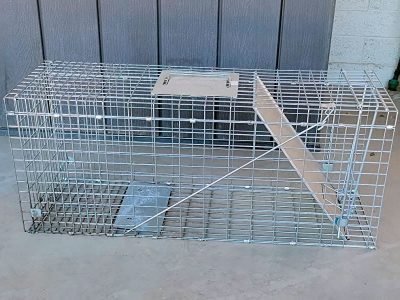
Editor’s Choice
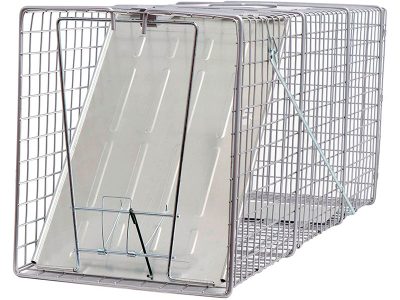
People’s Choice
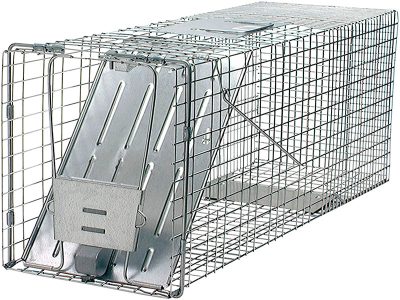
Durable Option
Types of Beaver Traps
1. Live/Humane Cage Traps
Live cage traps allow for the humane capture and relocation of beavers. These traps feature a trigger mechanism that closes a door when the beaver enters, keeping it safely contained until release.
- Best For: Homeowners who want a humane solution
- Advantages: Safe for both the beaver and the handler
- Placement: Near beaver activity areas or pathways

2. Body Grip/Kill Traps
Body grip traps are designed to kill beavers quickly. These traps feature powerful springs that close around the beaver’s body when triggered, resulting in a fast, humane kill.
- Best For: Professional trappers and serious beaver problems
- Advantages: Quick dispatch, highly effective
- Models: BG 220, BG 330 (most popular)

3. Leg Hold Traps & Snares
Leg hold traps and snares are designed to catch and hold beavers by their limbs or body. These traps are typically used by experienced trappers who check their traps frequently.
- Best For: Experienced trappers with proper training
- Considerations: Requires knowledge to set properly
- Legal Note: Regulated in many areas
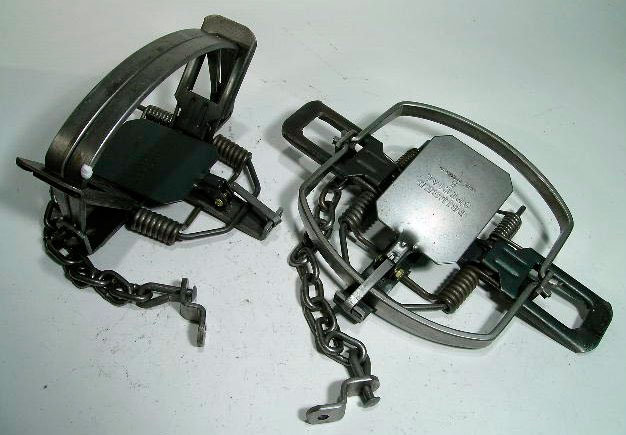
Before You Start
- Check local regulations regarding beaver trapping and relocation
- Some areas require permits or have specific seasons for beaver control
- Understand that improper trapping can harm wildlife or humans
- Always wear appropriate protective gear when handling traps
Consider Professional Help
- For extensive beaver problems, professional wildlife control may be best
- Professionals have experience in humane and effective trapping
- They can help with proper relocation or damage mitigation
- Professionals understand legal requirements and best practices
Emergency Situations
- If beaver dams are causing immediate flooding threats to structures
- When beavers have damaged utility infrastructure
- If water impoundment creates safety hazards
Best Beaver Trap Reviews
HomGarden Live Animal Cage Trap
Editor's ChoiceHow Does It Work
How to Use
- Place the trap where beavers frequently enter and leave the water
- Position the trap with the open door facing the beaver's habitat
- Set in the early evening before nocturnal beavers become active
- Check the trap regularly to minimize stress to captured animals
- Cover the bottom with natural materials to make it less suspicious
- Durable rust-resistant construction for lasting use
- Smooth interior edges prevent injury to trapped animals
- Spring-loaded door ensures quick, secure containment
- Large size appropriate for adult beavers
- Allows for humane capture and relocation
- Relatively heavy and bulky to transport
- May require bait to effectively attract beavers
- Spring mechanism requires careful setting to avoid accidental triggers
LifeSupplyUSA Humane Animal Trap
People's ChoiceHow Does It Work
How to Use
- Place along beaver runways or near lodge entrances
- Cover the trap floor with natural materials to disguise its presence
- Position small logs on both sides to naturally guide the beaver into the trap
- Set during early evening hours before beavers become active
- Check traps regularly and relocate captured animals promptly
- High-quality materials ensure long-term durability
- Single-door design simplifies setup and operation
- Smooth internal construction prevents animal injury
- Sensitive trigger mechanism improves capture rate
- Allows for humane capture and relocation
- Lacks a rear door which would make release easier
- Setup instructions not included
- Spring-loaded door can be difficult to hold while releasing animals
Havahart 1079 Large 1-Door Humane Live Animal Trap
Durable OptionHow Does It Work
How to Use
- Place near beaver activity areas such as dams, lodges, or feeding locations
- Add appropriate bait like poplar branches or apple pieces
- Position the open door facing the beaver's travel path
- Ensure the trap is on level ground for proper operation
- Check the trap regularly, especially during evening hours
- Made in the USA with quality construction standards
- Weather-resistant galvanized steel withstands outdoor conditions
- External trigger rod prevents animal tampering
- Smooth internal edges minimize risk of animal injury
- Solid door design increases security once trapped
- Single door makes release more challenging than dual-door models
- Some users report concerns about construction quality
- Exposed trigger mechanism may allow animals to reach through bars
Effective Beaver Trapping Techniques
Successfully trapping beavers requires understanding their behavior and properly placing your traps. Here are the most effective techniques used by wildlife management professionals:
Lodge Set Technique
Targeting beaver lodges is one of the most effective approaches for trapping these animals.
- Locate the beaver lodge, which will appear as a pile of sticks and mud.
- Find the underwater entrance/exit tunnels (most lodges have two).
- Place your trap directly in the path of these underwater routes.
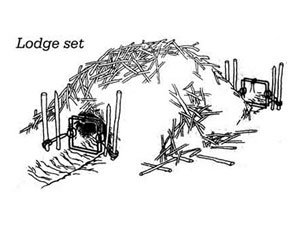
Dam Set Technique
Beavers regularly inspect and repair their dams, making these locations prime spots for trap placement.
- Identify beaver crossings on top of the dam (look for well-worn paths).
- Create a small breach in the dam (beavers will instinctively repair it).
- Place your trap at this breach point or on crossing points.
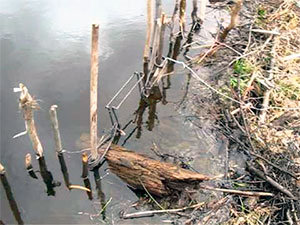
Runway Set Technique
Identifying and targeting beaver runways in shallow water can yield excellent results.
- Look for clear channels in vegetation where beavers frequently swim.
- Find areas with firm bottoms in shallow water for stable trap placement.
- Position the trap in the center of the runway, secured with stakes.

Beaver Baiting Strategies
While live traps can work without bait, using the right attractants significantly increases your chances of success. Beavers are vegetarians with specific preferences that can be leveraged for more effective trapping.
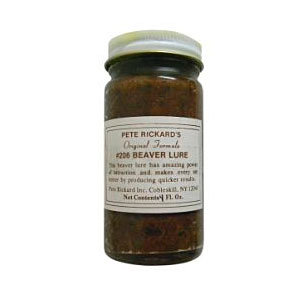
Commercial Beaver Castor Lure
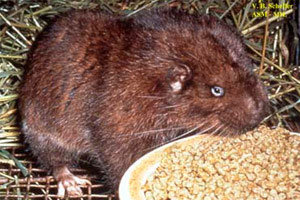
Proper Bait Placement
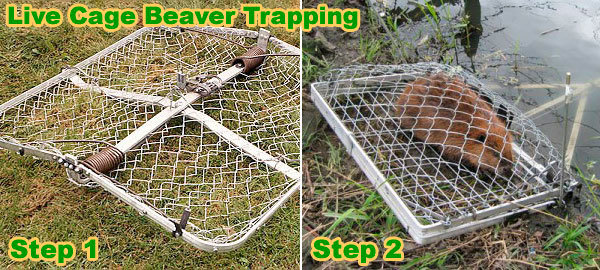
Baited Live Trap Setup
Best Beaver Baits
Natural Baits
- Poplar branches and twigs – A beaver favorite
- Aspen or willow branches – Highly attractive to beavers
- Apples – Cut in half to release more scent
- Corn – Can be effective in some situations
Commercial Lures
- Beaver castor – Scent glands from other beavers
- Poplar oil – Concentrated attractant
- Commercial beaver lures – Professional-grade attractants
Commercial products like Pete Rickard’s Beaver Trapping Lure can be highly effective, especially when used with natural baits.
Bait Placement Tips
- Position bait behind the trigger plate to ensure the beaver fully enters
- Hang bait from the top of the trap to make the beaver step on the trigger
- For castor lure, apply to a stick and place it at the back of the trap
- Refresh bait regularly to maintain strong scent attraction
Humane Trapping Considerations
When trapping beavers or any wildlife, ethical considerations should be a priority. Humane trapping not only reduces animal suffering but also complies with wildlife regulations in most areas. Follow these guidelines to ensure your trapping practices are as humane as possible.
-
Check Traps Frequently
Inspect live traps at least twice daily (morning and evening). Trapped beavers should never be left for extended periods, as this causes unnecessary stress and potential injury. -
Provide Weather Protection
Place traps where they’re protected from extreme weather conditions. In hot weather, ensure shade coverage; in cold weather, provide insulation to prevent hypothermia. -
Proper Handling Techniques
When transporting trapped beavers, minimize noise and movement. Cover the trap with a light blanket to reduce stress during transport. -
Appropriate Relocation Sites
Release beavers in suitable wetland habitats at least 10 miles from the capture site. Ensure the area has adequate water, food sources, and is legal for beaver relocation. -
Seasonal Considerations
Avoid trapping during extreme weather conditions. Be aware of breeding seasons (typically January-March) when kits may be dependent on parents.
Important Note on Regulations
Beaver trapping is regulated in most states and regions. Always check with your local wildlife management agency before beginning any trapping activity. Many areas require:
- Trapping licenses or permits
- Adherence to specific trapping seasons
- Reporting of captures
- Proper trap tagging and identification
Conclusion: Choosing the Right Beaver Trap
After thorough research and testing, it’s clear that live cage traps offer the most humane and effective solution for homeowners dealing with beaver problems. These traps allow for safe capture and relocation, maintaining the ecological balance while protecting your property.
Humane Solution
Live traps allow for capture without harm, giving you the option to relocate beavers rather than killing them. This ethical approach satisfies both wildlife conservation concerns and property protection needs.
Safe for Users
Unlike lethal traps that require special handling knowledge, live cage traps are generally safer for the user. They are generally safer for the user. They reduce the risk of accidental injury and don’t require specialized training to operate effectively.
Reusable Investment
Quality beaver traps are durable and can be used for many years, making them a cost-effective long-term solution compared to repeated professional removal services or ongoing property repairs.
For most homeowners facing beaver problems, we recommend the HomGarden Live Animal Cage Trap as our top choice. Its combination of durability, effective design, and humane operation makes it suitable for both beginners and experienced trappers. The single-door design is straightforward to set up, while its size accommodates adult beavers comfortably.
If you’re looking for a more budget-friendly option that doesn’t sacrifice quality, the LifeSupplyUSA Humane Animal Trap provides excellent value. Its slightly more compact design makes it easier to transport while still being effective for capturing adult beavers.
Remember that successful beaver management often involves more than just trapping. Consider complementary approaches such as exclusion fencing, water level control devices, or tree protection measures for comprehensive, long-term beaver management.
Pro Tips for Successful Beaver Trapping
- Be patient – successful trapping often takes multiple nights
- Location is key – proper placement significantly increases success rates
- Rotate trap locations if unsuccessful after 2-3 nights
- Minimize human scent on traps using gloves when handling
- Maintain a consistent checking schedule each morning and evening
Frequently Asked Questions About Beaver Trapping
What size trap is needed for adult beavers?
Adult beavers require large traps, typically at least 32″ x 10″ x 12″. The traps reviewed in this article (HomGarden, LifeSupplyUSA, and Havahart 1079) are all appropriately sized for adult beavers. Smaller traps designed for raccoons or opossums are insufficient for these large rodents.
Where is the best place to set a beaver trap?
The most effective locations for beaver traps include: 1) Near lodge entrances, 2) On beaver slides or runs where they enter/exit water, 3) On top of beaver dams where they cross regularly, and 4) Along established beaver paths. Look for signs of regular beaver activity such as freshly cut vegetation, slides, or worn paths.
Do I need a permit to trap beavers?
In most areas, yes. Beaver trapping is typically regulated by state wildlife agencies, and permits or licenses are often required. Regulations vary widely by location, so always check with your local wildlife department before beginning any trapping activity. Some areas also have specific trapping seasons for beavers.
What’s the best bait for beaver traps?
The most effective baits include: 1) Fresh poplar, aspen, or willow branches, 2) Castor-based commercial lures, 3) Apples or corn, and 4) Branches soaked in poplar oil. Beavers are attracted to both food sources and territorial scents, so combining these can increase effectiveness. Additionally, it’s important to strategically place your bait near areas where beavers are known to frequent, such as along banks or near existing dams. As you work to attract these industrious animals, consider that some of the best cat repellents for outdoors can also deter other unwanted wildlife, ensuring that your bait remains undisturbed. By creating a targeted and protected feeding zone, you’ll increase your chances of observing these fascinating creatures up close.
How far should I relocate trapped beavers?
Beavers should be relocated at least 10 miles from the capture site to prevent their return. However, many jurisdictions have specific regulations about relocation, and some prohibit it entirely. Always check local wildlife regulations before relocating any trapped beaver.
When is the best time to trap beavers?
The most effective time for beaver trapping is during spring and fall when they are most active. Beavers are primarily nocturnal, so setting traps in the late afternoon and checking them in the morning yields the best results. Avoid trapping during the breeding season (typically January-March) when kits may be dependent on parents.
